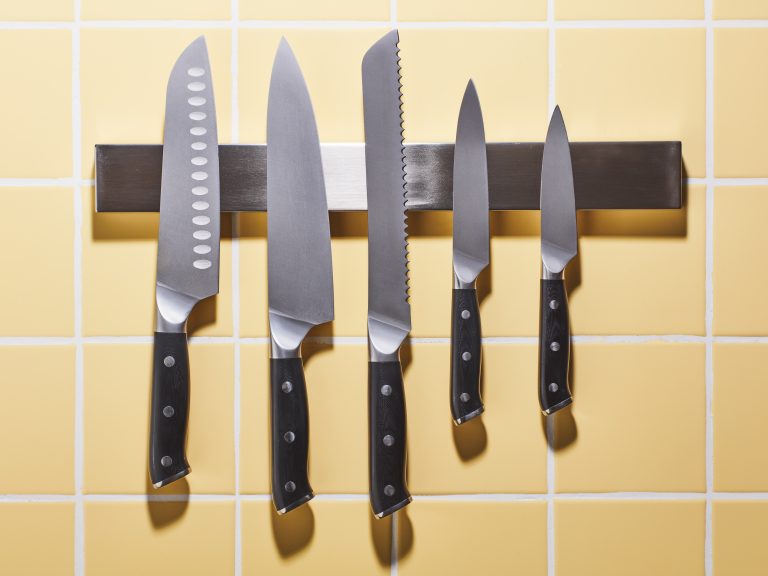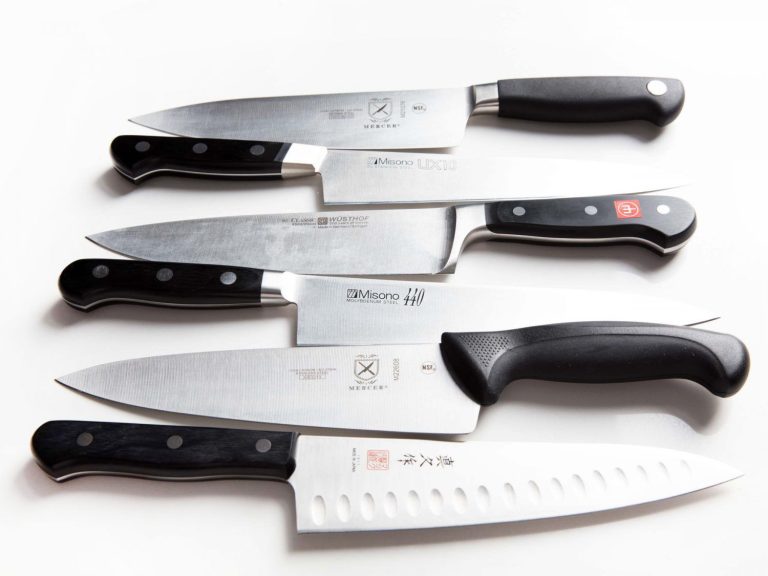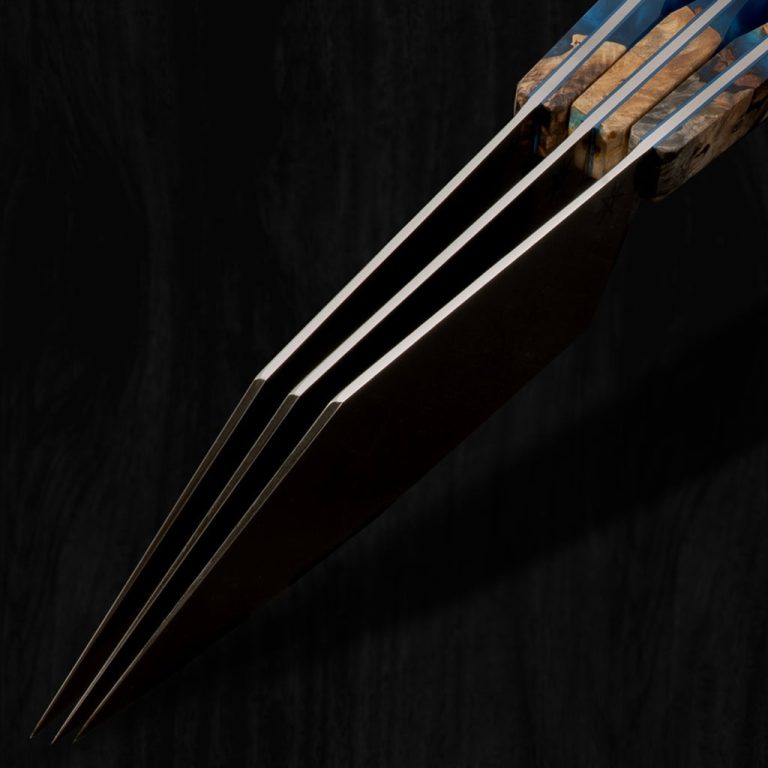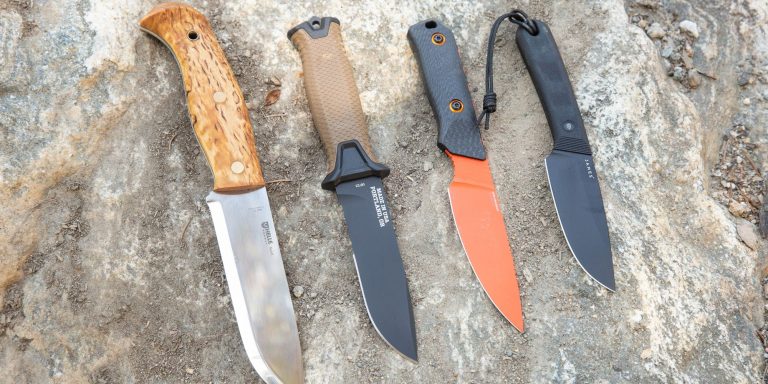Sushi Knife: The Ultimate Weapon for Perfectly Sliced Delights
A sushi knife is a specialized knife used for preparing sushi, featuring a long, single-edge blade with a sharp, precise cutting edge. Sushi fans know that a key ingredient for making perfect rolls is having the right tools, and a sushi knife is no exception.
This specialized knife is designed for the specific needs of sushi making, with a long, single-edge blade that allows for precise cutting and slicing. With its sharp and precise cutting edge, a sushi knife ensures clean and smooth cuts, creating beautiful and well-presented sushi rolls.
Whether you’re a professional chef or a home cook who enjoys making sushi, investing in a high-quality sushi knife is essential for achieving professional results. We will explore the features and benefits of a sushi knife, as well as provide tips on how to choose the best one for your needs.
Key Factors In Achieving Perfect Slices
font-family: arial, sans-serif;
border-collapse: collapse;
width: 100%;
}
td, th {
border: 1px solid #dddddd;
text-align: left;
padding: 8px;
}
tr:nth-child(even) {
background-color: #dddddd;
}
Sushi knives are crucial tools for achieving perfect slices. Various factors contribute to their performance, such as blade material and construction, blade sharpness and honing, and handle design and ergonomics.
| Factor | Description |
|---|---|
| Blade Material and Construction | The choice of blade material, such as high-carbon stainless steel or traditional carbon steel, affects the knife’s durability, sharpness, and ease of maintenance. The knife construction, including the presence of a full tang or bolster, also influences its balance and stability. |
| Blade Sharpness and Honing | A sharp blade is essential for clean and precise cuts. Sushi knives often feature a single bevel or double bevel edge for different cutting techniques. Regular honing and sharpening sessions help maintain the knife’s cutting performance. |
| Handle Design and Ergonomics | The handle’s design and ergonomics impact the knife’s comfort and control during use. Whether it is made of wood, plastic, or other materials, the handle should provide a secure grip and allow for easy maneuverability. |
**Different Types Of Sushi Knives**
Sushi knives are essential tools for any sushi chef or enthusiast. Each type of sushi knife is designed for specific purposes, ensuring precise cuts and enhancing the overall presentation of the dish. One of the most popular sushi knives is the Yanagiba, also known as the Sashimi Knife. Its long and slender blade makes it perfect for slicing raw fish with one fluid motion. Another type is the Deba, a sturdy filleting knife used for cutting through fish bones and skin. The Usuba is a vegetable knife that features a thin and sharp blade, ideal for creating intricate vegetable garnishes. For those looking for a versatile option, the Santoku is a multi-purpose knife suitable for various tasks in the kitchen. Lastly, the Takohiki knife is specifically designed for slicing octopus, ensuring uniform thickness and texture.
| Sushi Knife | Best For |
|---|---|
| Yanagiba | Slicing raw fish |
| Deba | Filleting and cutting fish |
| Usuba | Cutting vegetables |
| Santoku | Various kitchen tasks |
| Takohiki | Slicing octopus |
Having the right sushi knife for each task not only enhances efficiency but also brings out the authentic flavors and precise presentation of sushi dishes. Whether you are creating a delicate sashimi platter or finely slicing vegetables, selecting the appropriate sushi knife is key to achieving impeccable results.
**Caring For Your Sushi Knife**
Proper maintenance is essential for keeping your sushi knife sharp and effective for a long time.
Start by cleaning your sushi knife immediately after each use to remove any food particles or residue. Use a mild detergent and warm water, and always remember to dry the knife thoroughly to prevent rusting.
To maintain its sharpness, regularly **sharpen and hone your sushi knife**. Use a waterstone or a honing rod to carefully sharpen the blade at a 15 to 20-degree angle. **Honing** should be done before or after each use, while **sharpening** can be done every few months or as needed.
| Storing Your Sushi Knife |
|---|
| Always store your sushi knife in a **protective sheath** or a **wooden saya** to prevent any accidents and to keep the blade edge sharp. |
| Ensure that the knife is **completely dry** before storing it to prevent moisture buildup and rusting. |
| Store your sushi knife separately from other utensils to avoid any damage to the blade. |
By following these simple steps, you can ensure the longevity and performance of your sushi knife for many years to come.
Considerations For Selecting The Right Knife
When selecting a sushi knife, there are a few key considerations to keep in mind. The blade length and thickness play a significant role in the knife’s performance. A longer blade allows for cleaner cuts, while a shorter blade offers more maneuverability. As for the thickness, a thin blade is ideal for precision slicing, whereas a thicker blade provides durability.
The handle material and comfort are essential factors to consider. Look for a handle that offers a secure grip and is comfortable to hold for extended periods. Common handle materials include wood, plastic, and stainless steel.
Knife weight and balance contribute to the overall experience. A well-balanced knife ensures control and reduces strain during use. Consider your personal preferences and the tasks you’ll be performing when selecting a weight that suits you.
Of course, budget is always a consideration. Sushi knives come in a wide price range, so determine your budget before making a selection. Keep in mind that while quality knives can be an investment, they are likely to last longer and provide better performance.
Popular Brands And Styles
Popular Brands and Styles
Global
Brand Style Global versatile and durable Shun high-quality Japanese Yoshihiro handcrafted traditional Masamoto premium and sharp MAC precise and lightweight When it comes to sushi knives, there are several popular brands and styles to choose from. Some of the well-known global brands include Global, Shun, Yoshihiro, Masamoto, and MAC. Global knives are known for their versatility and durability. Shun knives are high-quality Japanese knives, perfect for sushi preparation. Yoshihiro knives are handcrafted in a traditional manner, ensuring exceptional quality. Masamoto knives are premium and known for their sharpness, ideal for precise cuts. MAC knives stand out for their precision and lightweight design. Each brand offers unique features and styles, catering to different preferences and requirements.
Customer Reviews And Testimonials
Customer Reviews and Testimonials
|
Sushi Knife receives high praise from chefs, home cooks, and restaurant owners alike. Sushi chefs highly recommend the use of a quality sushi knife due to its precision and sharpness. They emphasize the importance of having a knife that effortlessly cuts through delicate fish and thinly sliced ingredients, allowing for beautiful and professional-looking sushi creations. Home cooks who have invested in a sushi knife are delighted with the results. They appreciate the knife’s sleek design, comfortable grip, and exceptional cutting performance. It has become an essential tool for their sushi preparations at home, enhancing both the presentation and taste. Professional restaurant owners appreciate the durability and longevity of the sushi knife. They find that it withstands the demands of a busy kitchen and maintains its sharpness over time, ensuring consistently outstanding sushi dishes for their customers. |
Proper Slicing Techniques
Proper Slicing Techniques
Slice Angle and Pressure: A crucial aspect of slicing sushi is to maintain the proper angle and pressure. The angle at which you hold the knife plays a significant role in the precision of your cuts. Aim for a slight diagonal angle to create neat and consistent slices. It is also essential to apply the right amount of pressure. Use a gentle but firm hand to ensure clean cuts without crushing or tearing the sushi.
Long Smooth Strokes: When slicing sushi, it’s important to adopt a smooth slicing motion. Long, fluid strokes allow for clean and even cuts. Avoid sawing back and forth, as it can damage the sushi and make the end result less visually appealing.
Knife Position and Grip: Proper knife positioning and grip are vital for accurate and controlled slicing. Hold the knife firmly but comfortably, using a pinch grip where your thumb and index finger rest on opposite sides of the blade’s base. This grip provides stability and precision. Keep your wrist straight and your forearm aligned with the blade to ensure a consistent angle while slicing.
Expert Tips And Tricks
When it comes to sushi preparation, having a high-quality sushi knife is essential. A sushi knife, also known as a yanagiba or sashimi knife, is specifically designed to efficiently slice through raw fish and create clean, precise cuts.
Expert Tips and Tricks:
| Knife Skills Training | Advanced Cutting Techniques | Sushi Knife Maintenance Workshops |
|---|---|---|
| Proper knife handling and grip techniques are crucial for safe and efficient sushi preparation. | Learn advanced cutting techniques like tataki, hira-zukuri, and usuzukuri to elevate your sushi presentation. | Regular maintenance and sharpening workshops help to keep your sushi knife in optimal condition for long-lasting use. |
By mastering knife skills and learning advanced cutting techniques, sushi chefs can achieve the perfect texture and presentation for their sushi creations. Additionally, proper maintenance and sharpening of the sushi knife ensure its longevity and performance. Take advantage of knife skills training and maintenance workshops to enhance your sushi preparation skills and elevate your sushi creations.
Exploring Sushi Knife Recipes
“`html
The art of sushi-making is incomplete without the precision and finesse of a quality sushi knife. Sushi rolls (Maki), with their delicate layers of rice, fish, and vegetables, can be crafted effortlessly using a sharp, high-quality sushi knife. The clean, precise cuts made by the knife allow for beautiful presentation and an enhanced dining experience.
Next on our list is the sashimi platter. The exquisite slices of fresh fish require a sushi knife that effortlessly glides through the flesh, ensuring each piece is uniform and visually appealing. The knife’s sharpness plays a key role in preserving the flavors and textures of the fish.
When it comes to creating nigiri sushi, a sushi knife becomes an essential tool. The knife’s sharp edge helps shape and slice the fish and seafood toppings onto bite-sized beds of rice, creating a harmonious blend of flavors.
For those who prefer a bowl of sushi rather than the traditional rolls, chirashi sushi is the perfect choice. A sushi knife is needed to cut the sashimi into precise slices, which are then artfully arranged over a bed of sushi rice, resulting in a vibrant and visually stunning dish.
Lastly, let’s not forget temaki sushi. These hand-rolled cones require the precision of a sushi knife to slice through the nori (seaweed) and various fillings, so you can enjoy the perfect balance of flavors with every bite.
“`

Credit: imarku.net
Conclusion
The right sushi knife is an essential tool for any sushi lover or aspiring chef. With its specialized design and sharp blade, it allows for precise cuts that enhance the flavors and presentation of sushi. Investing in a high-quality sushi knife is a wise decision, as it will not only make your sushi-making experience more enjoyable but also ensure your safety in the kitchen.
Remember to choose a knife made from high-quality materials and to properly maintain and sharpen it for optimal performance. Whether you’re a professional sushi chef or simply enjoy making sushi at home, having a reliable sushi knife will elevate your culinary skills and impress your guests.
So, go ahead and add a sushi knife to your kitchen arsenal and take your sushi-making game to the next level.






